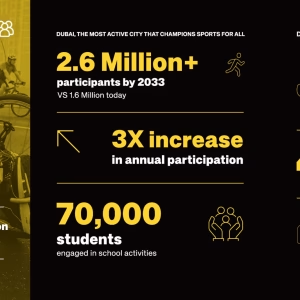Step inside one of the UAE’s new-age virtual reality arcades and you’ll find more than high-tech gear and flashing screens. You’ll discover a space where culture meets code, where tradition blends seamlessly with innovation, and where young creatives are using the digital world to tell powerful stories. From Dubai to Abu Dhabi and beyond, virtual reality (VR) arcades are becoming more than just fun—they’re fast evolving into cultural spaces that entertain, educate, and inspire.
The Rise of VR Culture in the Emirates
Arcades in the UAE are no longer limited to button-mashing machines or motion simulators. Instead, they’ve transformed into immersive playgrounds that allow players to explore otherworldly landscapes, historical scenes, and futuristic metaverses—all while staying indoors.
What makes VR particularly exciting in the Emirates is its cultural customization. Unlike the generic VR setups seen elsewhere, many arcades here offer localized experiences. Think simulated pearl diving adventures in the Arabian Gulf, virtual camel races across the desert, or historical re-creations of old souks and oases. These virtual worlds blend entertainment with cultural preservation, making them meaningful as well as thrilling.

The popularity of these spaces is steadily growing. According to recent online trends, there’s been a noticeable spike in searches for “VR arcades UAE” and “virtual reality experiences Dubai” over the past year. These increases often coincide with school holidays, long weekends, and cultural festivals—suggesting that families and young adults alike are seeking out immersive ways to spend their leisure time.
Where Innovation Meets Identity
One of the most compelling elements of the UAE’s VR movement is how it integrates local heritage into the gaming experience. Several arcades have launched projects that allow players to virtually walk through ancient forts, attend traditional weddings, or explore falconry exhibitions—all without ever leaving the city.

These aren’t just gimmicks. Developers work closely with historians and local artists to ensure authenticity. Visuals are designed using archival images, sound effects are drawn from traditional music, and storylines are inspired by real-life events and folk tales. The result? An experience that doesn’t just dazzle the senses but also strengthens a sense of cultural pride.
This effort reflects a broader national goal. The UAE’s Vision 2031 and Centennial 2071 strategies both emphasize innovation while upholding Emirati heritage. Virtual reality offers the perfect medium to do both, helping the next generation stay rooted in their identity while embracing the future.
Community Hubs, Not Just Tech Spots
VR arcades have also emerged as community gathering spots—especially for the youth. Unlike solitary gaming experiences, many VR arcades in the UAE promote social interaction. Multiplayer games allow groups of friends to collaborate on missions, solve challenges, or compete in sports simulations. There’s laughter, teamwork, and occasionally some healthy rivalry.
In places like Dubai and Sharjah, arcades often become social destinations on weekends. Teenagers celebrate birthdays there, families host bonding nights, and even corporate teams book them for casual team-building sessions.

Operators are also making efforts to ensure inclusivity. Some VR centers hold sensory-friendly hours tailored for individuals on the autism spectrum, while others provide language support in Arabic, English, Hindi, and Filipino to cater to the country’s diverse residents. This attention to detail is helping these arcades move beyond novelty and into the realm of shared cultural experiences.
Empowering Homegrown Creators
At the heart of this VR boom are young Emiratis and residents who are shaping the future of digital storytelling. Startups and studios across the UAE are stepping up to create immersive content that reflects the country’s values, stories, and landscapes.
One such example is a group of developers from Abu Dhabi who recently designed a VR experience called Echoes of the Dunes. In it, players explore a lost Bedouin village, guided by the voice of an elderly narrator telling tales of his childhood. The experience isn’t just visually stunning—it’s emotionally resonant. Every detail, from the traditional architecture to the rhythmic drumming in the background, has been curated to reflect authentic heritage.
For creators like Fatima Al Hosani, a 27-year-old VR designer, the goal is to tell local stories in new formats. “We’re not trying to copy the West,” she says. “We’re building our own digital culture—one that speaks our language, shows our traditions, and imagines our future.”
Support for these ventures is growing. Government-backed innovation hubs, university grants, and even regional investors are recognizing the potential of immersive technology. With this momentum, the UAE is not only consuming VR—it’s creating it.
A Future Beyond Gaming

While VR arcades are rooted in entertainment, their potential stretches far beyond just fun and games. Already, the technology is being used in classrooms across the UAE to enhance learning. Students can experience virtual field trips to archaeological sites, simulate science experiments, or even take part in mock United Nations meetings—all in immersive environments that make learning come alive.
Healthcare professionals are also beginning to explore VR for therapy. Mental health clinics are using calming virtual environments to reduce anxiety, while physical therapists are incorporating gamified exercises to help with rehabilitation. These applications hint at a future where VR arcades could double as wellness centers, educational labs, and creative studios.
Tourism is another area ripe for VR integration. In major cities like Abu Dhabi and Dubai, tour operators are beginning to experiment with pre-experience modules, allowing tourists to virtually explore attractions before visiting. This “try before you go” approach is proving effective in both marketing and accessibility.
The Challenges Ahead
Of course, the journey is not without hurdles. High setup costs, hardware maintenance, and the need for constant content updates remain challenges for arcade owners. Additionally, as with all emerging tech, accessibility and digital literacy are concerns—especially among older generations who may find the interfaces intimidating.
There’s also the risk of over-commercialization. As VR arcades gain popularity, there’s a temptation to flood the market with generic, off-the-shelf games. The real opportunity lies in developing locally relevant, meaningful content that resonates with the diverse communities of the UAE.
Yet, these challenges are not deterring innovation. If anything, they are motivating creatives, educators, and entrepreneurs to find smarter, more sustainable ways to grow the industry.
Conclusion
The story of VR arcades in the UAE is about more than just flashy technology. It’s about how a country known for its rapid development is choosing to merge progress with purpose. These arcades are spaces where heritage is honored, where diversity is celebrated, and where entertainment serves as a bridge between generations and cultures.
As the line between physical and digital continues to blur, the UAE’s approach to virtual reality stands as a model for how innovation can be both future-facing and deeply rooted in identity. Whether it’s a teenager navigating a digital pearl diving expedition, a visitor exploring the history of falconry, or a family enjoying a weekend of virtual escapades, one thing is certain—VR in the UAE is not just a trend. It’s a movement. And it’s only just getting started.
Read More: Meet the Emirati Coder Teaching Kids AI in Remote Areas














